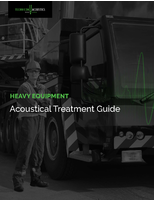Pressure Sensors / Detectors / Transducers
Low Pressure Sensing Die utilizes MEMS technology.
Press Release Summary:

Utilizing open bridge configuration, measuring 2 x 2 mm square, MEMS Piezoresistive Low Pressure Sensing Die is suited for high volume applications requiring pressure measurement to as low as ¼ in. of water full scale. By utilizing boss-less structure, position sensitivity is minimized to 0.1% in. H2O/g. Applications include HVAC variable air volume controls, automotive fuel vapor recovery systems, medical air flow, and portable/handheld devices.
Original Press Release:
MEMS Piezoresistive Low Pressure Sensing Die
All Sensors Corporation of Morgan Hill, California has announced the introduction of low pressure sensor die for high volume applications requiring pressure measurement to as low as a quarter inch of water full scale. This introduction of a new pressure sensor die marks the fifth major silicon pressure sensor die topology to be introduced over the past fifty years.
Die Features
The MEMS Piezoresistive Low Pressure Sensing Die utilizes an open bridge configuration, measuring 2mm x 2mm square. Industry best sensitivity specifications are made possible by break though process technology in combination with innovative MEMS topology. The new die design features maximum pressure response while maintaining low package stress susceptibility. By utilizing a boss-less structure the position sensitivity is minimized (typically 0.1% inH2O/g).
History
In the 1960's Bell Labs developed and Honeywell commercialized the first silicon pressure sensor using longitudinal and transverse strain sensitive resistors with square micromachined diaphragms. This design provided acceptable performance to as low as one psi.
In the 1970's Motorola introduced a shear strain silicon pressure sensor with performance targeted for automotive manifold absolute pressure (MAP) applications. These sensors incorporate shear strain sensitive resistors with square micromachined diaphragms with superior performance at 15 psia.
Also, in the 1970's several companies developed and commercialized silicon variable capacitance structures designed to detect either parallel plate changes in capacitance with pressure or changes in edge effect variable capacitance with changes in pressure. These sensors provided excellent response to pressures less than one inch of water. These sensors where either too large or too expensive for many applications.
In the 1980's several companies, most notably Silicon Microstructures, introduced longitudinal and transverse strain sensors with enhanced silicon microstructures to
provide excellent pressure sensing to as low as several inches of water. Honeywell and others have been able to use this structure in conjunction with Honeywell patent 6,023,978 to extend the range to below an inch of water full scale.
This year All Sensors has developed, introduced and will commercialize a next generation silicon pressure sensor that provides superior performance to fractions of an inch of water full scale. This sensor combines elements of features found in pressure sensors dating back to bonded strain gage sensors of the 1950's to enhanced, state of the art, silicon micromachining of silicon on insulator (SOI) wafers.
Ideal Applications
o HVAC variable air volume controls
o Automotive fuel vapor recovery systems
o Medical air flow
o Portable/Handheld devices
Price
Contact factory for price. Samples are currently available for product testing.
For additional information, please contact:
Dan DeFalco
408 225 4314 tel
408 225 2079 fax
ddefalco@allsensors.com




